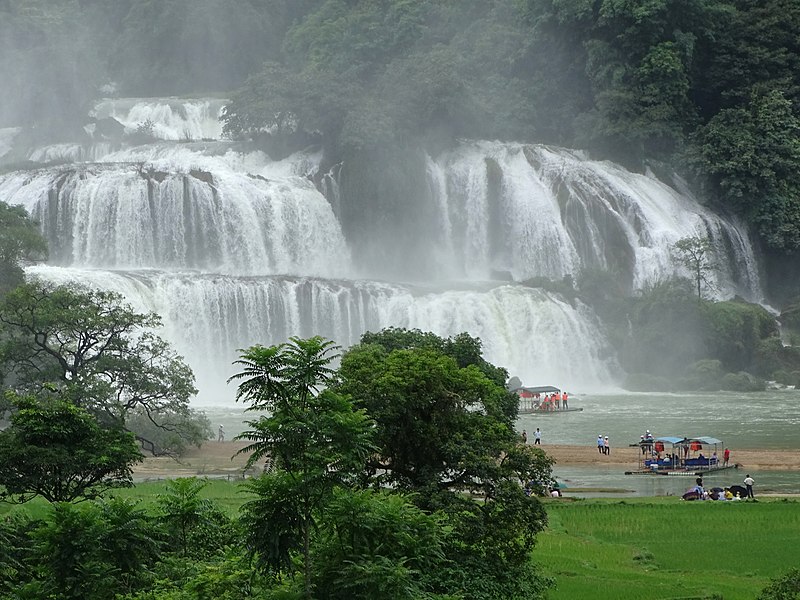
Cao Bang Province, Vietnam has an amazing trek among the pyramidal peaks and evergreen Paddy fields of Highland Vietnam will lead you to remote hill-tribe villages. For this reason, this fascinating natural treasure is a unique place that you must put on your list of places to visit.

Things to Do
Non Nuoc Cao Bang Geopark
Recognized by UNESCO as a Global Geopark in Vietnam after Dong Van Stone Plateau, Non-Nuoc Cao Bang Geopark is the highlight you cannot miss when setting your foot in Cao Bang province. This park is not only renowned for its rich biodiversity but also the stunning karst landscape. The researchers also had found the sedimentary rocks date from 500 million years ago in this park. Discover Non-Nuoc Cao Bang Geopark you will have a chance to admire the magnificent Ban Gioc Waterfall as well as many historical monuments such as Pac Bo Cave or Tran Hung Dao Forest.
Bản Giốc Waterfall
Located on the border between China and Vietnam, Bản Giốc is the fourth largest waterfall in the world. Measuring 300 meters wide, the falls are absolutely breathtaking in size. The vast area and range of different falls and pools within the park is captivating. Set in a striking valley and surrounded by lush jungle, Bản Giốc feels like a paradise of its own.
Trúc Lâm Phật Tích Pagoda
A short but steep walk brings you to this traditional Vietnamese-style temple. The design of Trúc Lâm pagoda fits perfectly into the hillside. As you climb higher to the main temple area, a valley filled with karsts unfolds below. A stunning spot not far from Bản Giốc Waterfalls, Trúc Lâm Pagoda can easily be visited on the same day.
Nguom Ngao Cave
The cave of 300 million years old is a valuable gift of nature spending on this wonderful land. Tourists explore Nguom Ngao Cave for its mysterious space created by marvelous stalactites on one side and an interesting legend behind the special name. The cave owns a total length of nearly 2200m with three gates and thousands of small grottos. Setting foot inside Nguom Ngao Cave, you will be impressed by a miraculous collection of limestone mountains and stalactites taking millions of years to form their unique forms today.
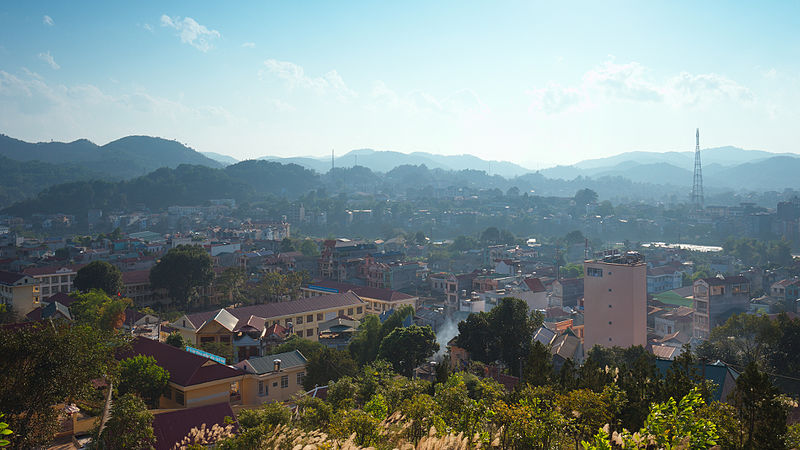
How to get there
Cao Bang town is 169 miles (272 km) north of Hanoi (where the Noi Bai International Airport, HAN, is). Daily buses from the capital take about seven hours to negotiate the route, or you can rent a car and driver from a reputable agency in Hanoi.

When to go
Vietnam may be a tropical country, but winters in the northern highlands can be bitterly cold. Rainfall is heavy from May through August. In addition to the Tet (The Chinese lunar year), a Tay harvest festival holiday called Long Ton (Going to the Field) takes place about a week later after Tet concludes.
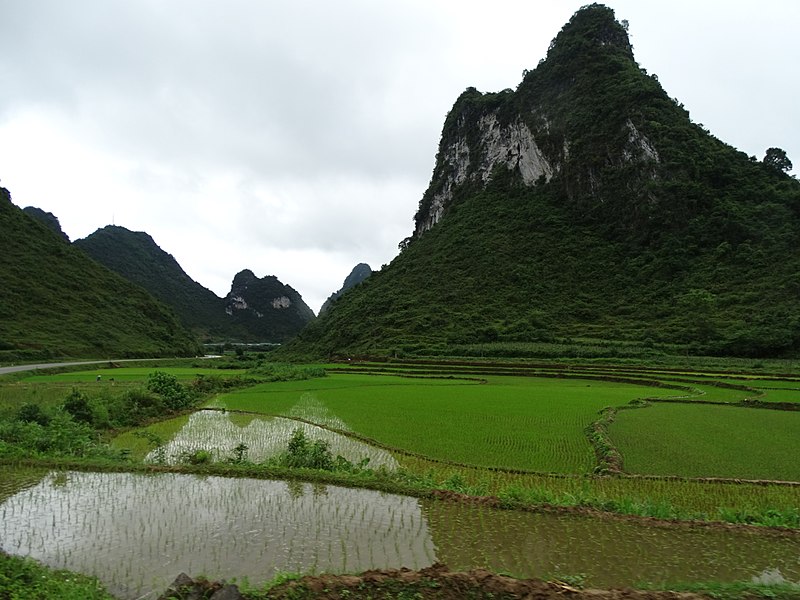
How long
Two or four days are enough to visit this magical place.

Opening and Closing Hours
The Falls are open every day for 24 hours. And also the other attractions before mentioned.

Planning
Bản Giốc Waterfall
- Bus Ticket = 80,000-dong (one way)
- Entrance Fee = 40,000-dong
- Kayak in the natural pool – 50,000-dong
- Take a bamboo raft to the base of the falls – 100,000-dong
Important: You have to arrange a special permit (just a bit of a bureaucratic hang-up) to get to the falls. Don’t try to do it yourself a waste of time, really just arrive in Cao Bang the night before you plan to see the falls and have your hotel make arrangements (for a small fee).
Trúc Lâm Phật Tích Pagoda
Admission is free and there is a stunning view of the falls from the top.
For all these places before mentioned you can book in advance via through local hotel or nearby tour operator.

Inside Information
Cao Bằng is easily navigated on foot, but xe ôm (motorbike taxis) are convenient and cheap.
The Bằng Giang River splits the city into two. The bus station is on the eastern side of the river; cross the bridge to find the main street, Kim Dong (parallel to the river), the market and most of the hotels.

History
The area, Cao Bằng (高平; ‘high plateau’) was the stronghold of the last years of the Mạc dynasty after their 1592 defeat at the hands of the Trịnh lords. During the 19th century, the area was resistant to the Nguyen government.
The city is also known for the Battle of Cao Bằng, the first major decisive victory of the Viet Minh against the French Army.
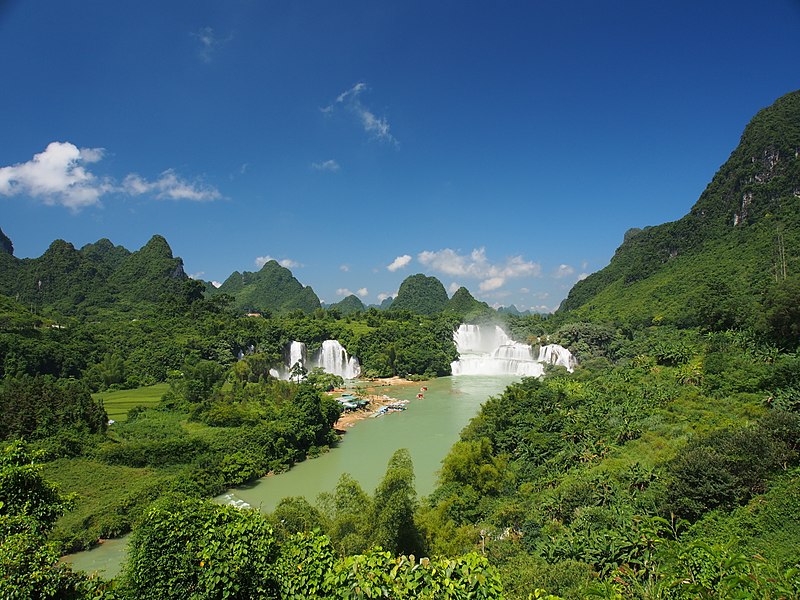
Websites
- www.vietnamtourism.com
- www.hanoipeaceyour.vn
- www.paradissa.com
- www.waytovietnam.com/car.asp

Other Nearby Attractions
Border Gates and Markers
In addition, there are many border gates between Cao Bang and China such as Ta Lung, Tra Linh, Po Peo, Ly Van, and Soc Giang. Not only that, out of the 1,971 border makers in the seven northern border provinces, Cao Bang has the most border markers (634 markers). Therefore, you can visit them and check in as much as possible.
Phia Oac – Phia Den
Phia Oac – Phia Den attracts tourists with its beautiful landscapes of diverse forests, nature reserves, national parks with more than 300,000 hectares, and huge salmon aquaculture. Phia Oac is also the source of five large rivers in the area.
Address: Nguyen Binh district, Cao Bang province
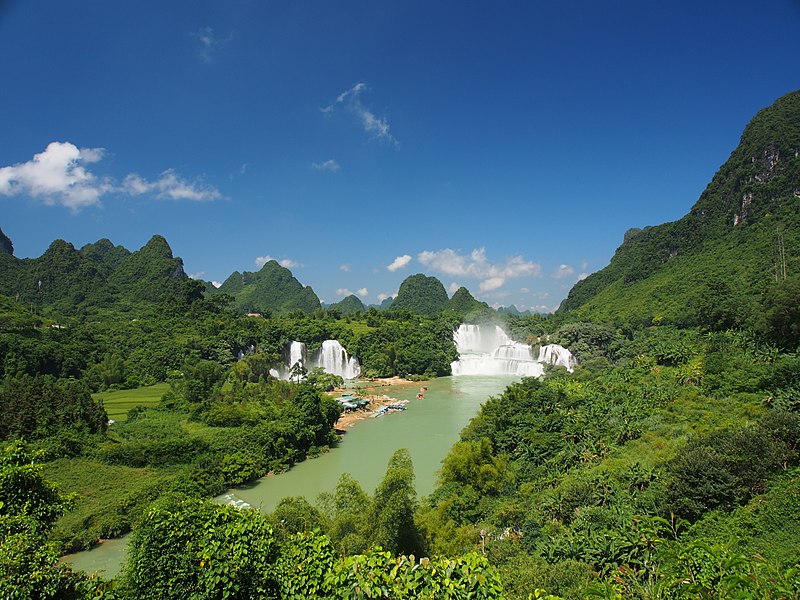
If you loved this article or found it useful, don’t forget to share it with your adventurous and travel-hacking friends! If you want more posts like this, follow us on Youtube, Instagram, Pinterest, Twitter Facebook or Reddit and subscribe to our newsletter!

